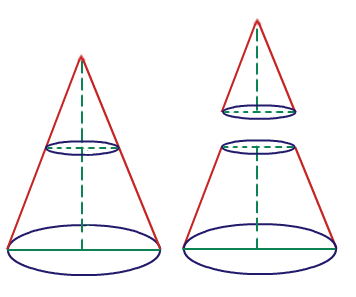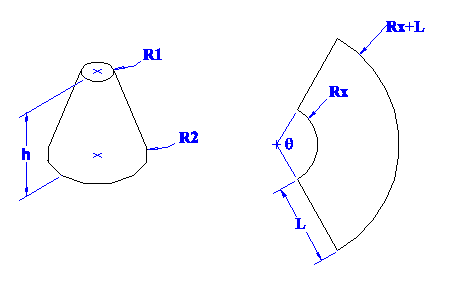A cone has a height of #8 cm# and its base has a radius of #6 cm#. If the cone is horizontally cut into two segments #7 cm# from the base, what would the surface area of the bottom segment be?
1 Answer
Area is
Explanation:
 Figure 1
Figure 1
So we have a cone that has been sliced into 2. The bottom cone consists of two circles and a frustum. The flattened frustum can be seen on the right side of the image below.
 Figure 2
Figure 2
We can see that the area of the frustum is just the difference between the area difference of the sector 2 concentric circles.
This area difference is essentially the formula for the area of a frustum:
Ignoring Figure 2 and its labels,
Back to Figure 1, the height
Recall
In the cone, image
However, the opposite side of
Substitute
Phew!
Now, we can finally calculate the area of the frustum!
where
Now we can calculate the areas of the top and bottom circles easily and add it all together:


